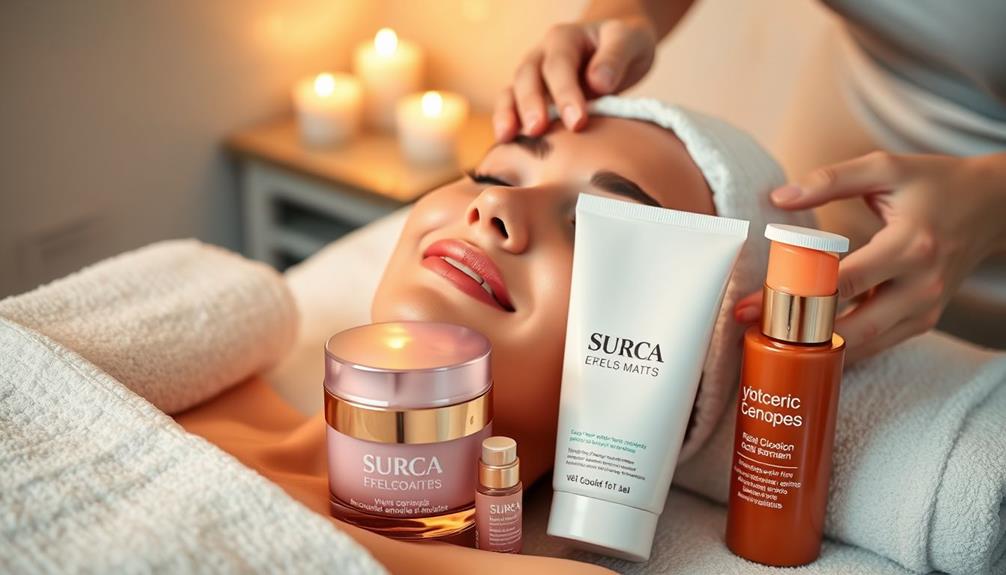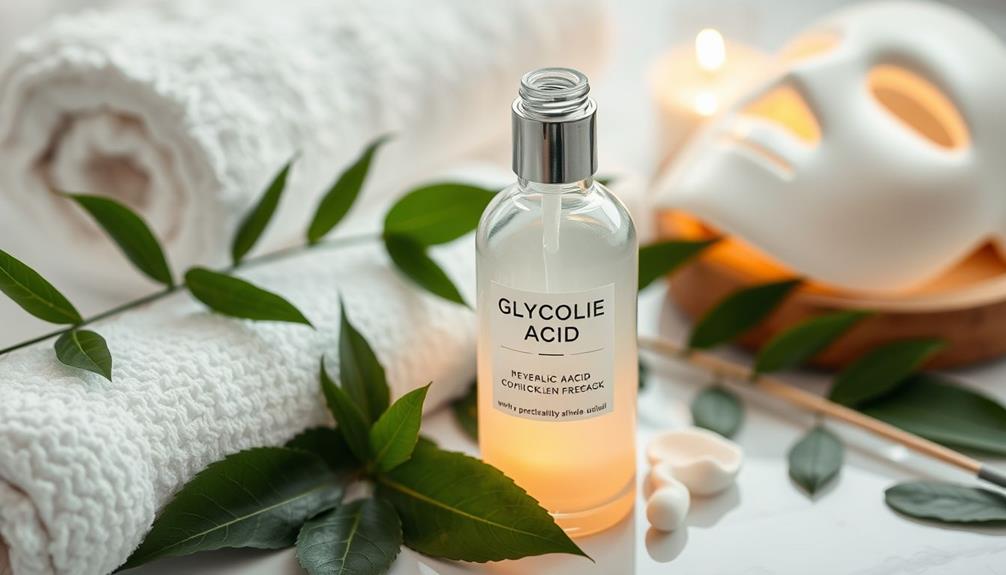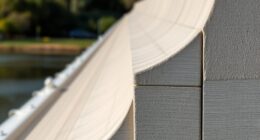Trying a 70% glycolic acid peel can yield positive results, but it is important to consider certain factors before proceeding. This peel is known to effectively enhance skin texture, diminish fine lines, and reduce acne scars. However, it is recommended for individuals with previous peel experience, especially those with normal to dry skin types. If you have sensitive skin or conditions such as rosacea, it is advised to seek advice from a dermatologist. It is crucial to properly prepare your skin before the treatment and diligently follow a post-peel aftercare routine to optimize the benefits. Interested in learning more about how to prep and care for your skin post-peel? Valuable information awaits you.
Key Takeaways
- A 70% glycolic acid peel is suitable for experienced users with normal to dry skin types seeking significant improvements in skin texture and tone.
- Ideal candidates include those with advanced aging signs, hyperpigmentation, or acne scars; consultation with a dermatologist is recommended for tailored advice.
- Preparation is crucial; avoid exfoliants for a week prior and conduct a patch test to assess skin sensitivity.
- Post-treatment care involves using broad-spectrum sunscreen daily and hydrating products to support recovery and minimize side effects like redness or peeling.
What Is Glycolic Acid?
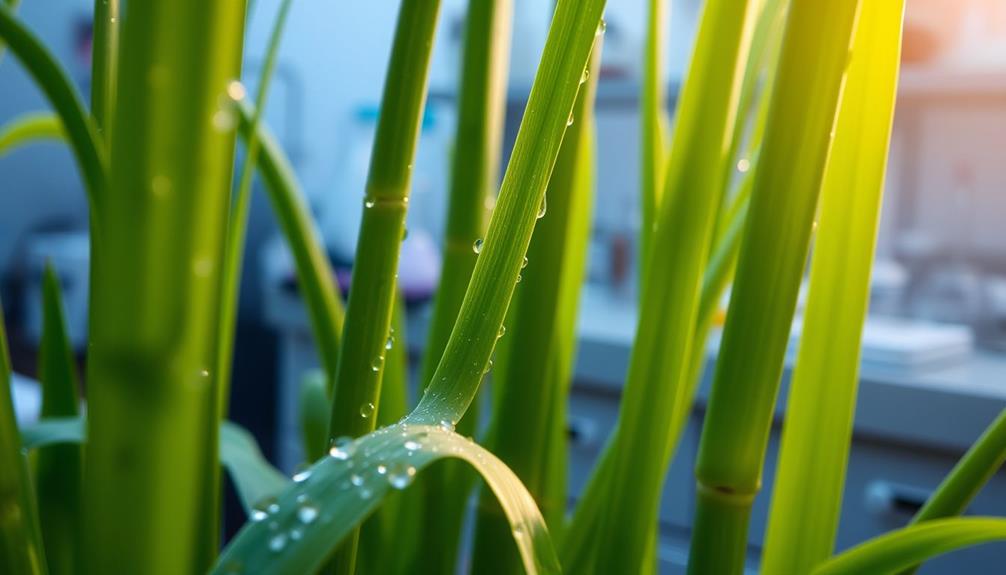
Glycolic Acid is a powerful alpha-hydroxy acid (AHA) from sugarcane that effectively penetrates your skin for impressive exfoliation. As the smallest AHA, its molecular size allows it to dissolve the bonds between dead skin cells, making your skin smoother and more radiant.
You'll often find glycolic acid in chemical peels, especially glycolic acid peels, which target various skin concerns like hyperpigmentation, fine lines, and acne scars. Additionally, the use of natural ingredients, such as essential oils for skin health, can complement glycolic acid treatments by providing nourishment and antimicrobial properties.
By promoting exfoliation, glycolic acid helps reveal a fresher layer of skin beneath, improving texture and tone. This process not only enhances your skin's appearance but also stimulates collagen production, which is crucial for maintaining youthful, plump skin.
Regularly using glycolic acid can also help prevent clogged pores, consequently managing acne effectively. It works by inhibiting melanin production through the inhibition of tyrosinase, which can further reduce dark spots and uneven skin tone.
Incorporating glycolic acid into your skincare routine can lead to visible improvements, addressing multiple skin concerns and boosting your overall skin health.
Benefits of a 70% Peel
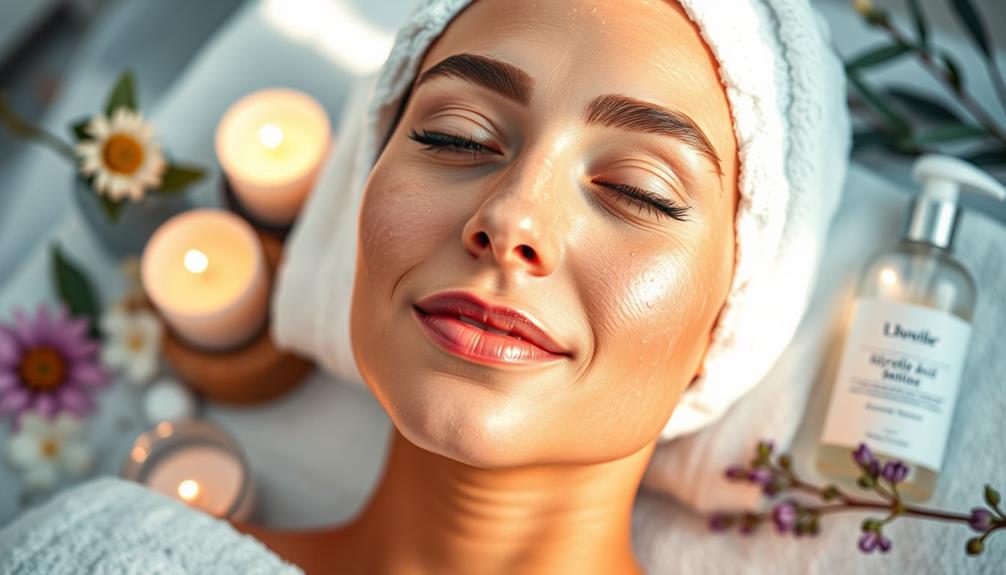
A 70% peel offers powerful benefits for rejuvenating your skin, effectively targeting advanced signs of aging and enhancing overall texture. This concentrated treatment is designed for those looking to make a significant impact on their skin's appearance. Essential oils, such as Lavender and Frankincense, can also complement skin treatments by promoting relaxation and overall well-being, enhancing your skincare routine with aromatherapy benefits.
Here's what you can expect:
- Improved skin texture: Say goodbye to rough patches and uneven tone, as the peel smooths and refines your skin's surface.
- Increased collagen production: Stimulating collagen helps firm up your skin, reducing sagging and the presence of fine lines and wrinkles.
- Diminished hyperpigmentation: The peel effectively targets dark spots and uneven pigmentation, leading to a more uniform complexion.
With regular use, this peel enhances skin radiance, providing a fresh and vibrant look. If you're seeking dramatic improvements in your skin's health and appearance, a 70% glycolic acid peel might just be the solution you need.
Just remember to follow proper aftercare for the best results.
Ideal Candidates for Peels

When considering a 70% glycolic acid peel, it's important to assess your skin type and experience level.
If you're looking to tackle advanced signs of aging or improve skin texture, this treatment might be for you, but prior experience with lower concentration peels is vital.
Additionally, maintaining a consistent skincare routine, including yoga for back pain relief, can help enhance your skin's overall health.
Always consult with a professional to confirm you're a suitable candidate for the best results.
Skin Type Suitability
Individuals with normal to dry skin types and some experience with chemical peels often find themselves as ideal candidates for a 70% glycolic acid peel. This strong treatment can effectively address various skin concerns, but it's vital to take into account your skin type suitability before proceeding. Somatic therapy techniques can also enhance body awareness, which may help individuals become more attuned to their skin and its reactions during such treatments body awareness techniques.
Here are some key points to keep in mind:
- Fitzpatrick skin types I to III typically tolerate higher concentrations better, making them more suitable for this peel.
- Those with sensitive skin or conditions like rosacea or eczema should consult a dermatologist first.
- Ideal candidates usually have advanced signs of aging, hyperpigmentation, or acne scars, which can be improved with this treatment.
While a 70% glycolic acid peel can yield impressive results, understanding your skin's needs and limitations is essential.
Proceed with caution if you have darker skin tones (Fitzpatrick IV, V, VI) as you may face increased risks of hyperpigmentation.
Always prioritize your skin's health and consult a professional to determine the best approach for your specific situation.
Experience Level Required
Understanding your experience level is essential for determining if a 70% glycolic acid peel is the right choice, especially if you've previously tried lighter peels and are familiar with how your skin reacts to exfoliation. This peel is typically reserved for those with a solid understanding of chemical peels and their effects.
Here's a quick overview of ideal candidates based on experience level:
| Experience Level | Ideal Candidates |
|---|---|
| Beginner | Not recommended |
| Intermediate | May consider with caution |
| Advanced | Best suited for 70% glycolic acid peel |
If you have normal to dry skin and are tackling advanced signs of aging, you might be a good fit. However, individuals with darker skin tones should proceed with caution due to higher risks of irritation or hyperpigmentation. Before scheduling your peel, always perform a patch test to assess skin sensitivity. Additionally, a dermatologist consultation is vital to tailor your treatment plan and determine if a higher concentration peel is appropriate for your unique skin conditions.
Desired Treatment Outcomes
Those seeking to rejuvenate their skin often turn to a 70% glycolic acid peel to effectively tackle advanced signs of aging, such as deep lines, wrinkles, and age spots. This treatment is particularly beneficial for individuals with normal to dry skin types who've prior experience with chemical peels.
Incorporating a proper skincare routine can also enhance the results of the peel, ensuring your skin remains hydrated and protected. For those interested in creating a personalized space, consider how best window treatments can complement your aesthetic while also providing privacy.
If you're considering this peel, here are some desired treatment outcomes:
- Reduction of deep lines and wrinkles
- Improvement in skin hyperpigmentation and uneven skin tone
- Enhanced skin texture and brightness
It's important to note that candidates with Fitzpatrick skin types I to III are ideal for this treatment, as those with darker skin tones may experience adverse effects.
The recommended treatment frequency is every 2-4 weeks, allowing your skin to recover adequately between sessions. If you're struggling with discoloration or dullness, a 70% glycolic acid peel can be a powerful solution to help you achieve smoother, healthier skin while addressing the signs of aging.
Just be sure to consult with a skincare professional to determine if this peel is right for you.
Preparation for Treatment
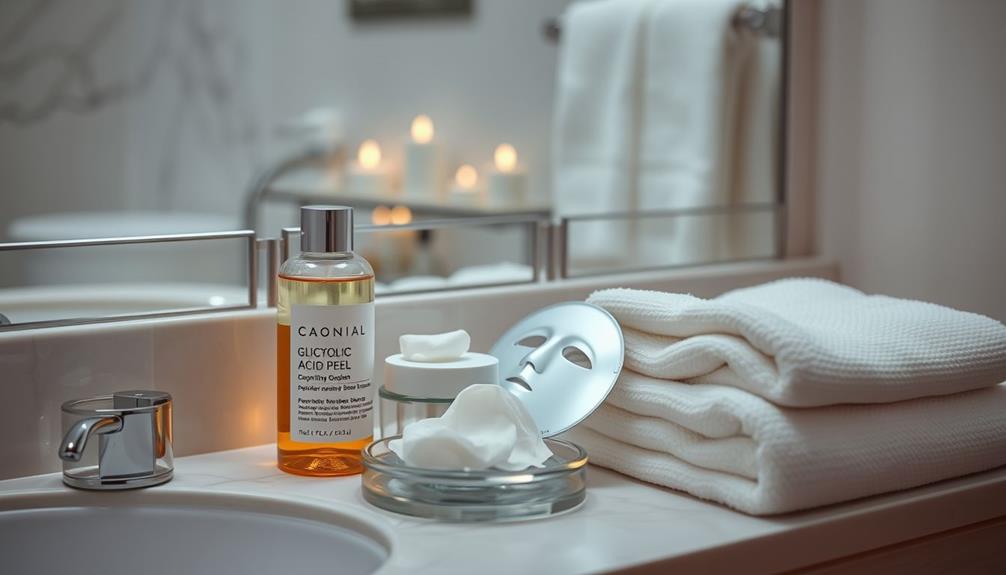
Before your 70% glycolic acid peel, it's important to prepare your skin properly to guarantee the best results and minimize irritation. Start by avoiding all forms of exfoliation, as well as products containing AHAs, BHAs, or retinoids, for at least one week. This helps reduce the risk of skin irritation during the procedure.
Additionally, using a gentle cleanser can be beneficial for maintaining skin health, much like the recommendations for hair products for curly hair that emphasize the importance of suitable formulations.
A patch test is a wise choice, especially if you have sensitive skin. It allows you to assess your skin's tolerance and prevent any adverse reactions before undergoing the full treatment.
Consulting with a dermatologist is also vital. They can evaluate your skin type and condition, ensuring it's in ideal health for the peel and reducing the risk of complications.
For pre-peel preparation, consider using a gentle cleanser and a peel prep solution to adequately prime your skin.
Additionally, limit sun exposure and diligently apply broad-spectrum sunscreen in the days leading up to your glycolic acid peel. This protects your skin and enhances the overall results of the treatment.
Proper preparation sets the stage for a successful peel experience, allowing you to achieve your desired outcomes.
Treatment Process Overview

Now that you've prepared your skin, it's time to focus on the treatment process itself.
You'll start by applying the glycolic acid peel, paying close attention to timing and your skin's reaction.
After the treatment, following specific post-care guidelines will help guarantee your skin heals properly and stays protected.
Preparation Steps Required
To confirm your skin is ready for a 70% glycolic acid peel, you'll need to follow several important preparation steps. Proper preparation is essential to minimize skin sensitivity and guarantee the best results from your treatment. Here's what you should do:
- Avoid exfoliation: Stop using all forms of exfoliating products, including those with AHAs, BHAs, and retinoids, at least one week before the peel.
- Cleanse skin: Use a gentle, gel-based cleanser to thoroughly cleanse your skin, removing any impurities and oils.
- Patch test: Before the full application, perform a patch test on a small area of skin to assess sensitivity and avoid adverse reactions.
Application and Timing
After confirming your skin is properly prepared, the next step involves applying the 70% glycolic acid peel with careful attention to timing and skin response.
The initial application time typically ranges from 3 to 5 minutes, allowing you to assess your skin's tolerance. If you have thicker, oily skin, you might tolerate longer exposure, up to 10-15 minutes. However, if your skin is sensitive or dry, stick to 1-2 minutes to avoid irritation.
In professional settings, practitioners often leave the peel on for 5 to 30 minutes, depending on how your skin reacts to the glycolic acid. It's vital to monitor your skin during this process, as the acid continues to affect your skin until you neutralize it with a neutralizing solution.
After the peel, rinse your skin with cool water to stop the acid's effects.
Remember to avoid reapplying the peel on the same area for at least 3-4 weeks to allow for proper healing. These careful steps guarantee a safer experience and enhance the effectiveness of the treatment.
Post-Treatment Care Guidelines
Proper post-treatment care is essential for guaranteeing your skin heals effectively and remains protected after a 70% glycolic acid peel. Following the procedure, take specific steps to nurture your skin and avoid complications.
- Use a neutralizer solution: After the peel, neutralize it properly and rinse with cool water to restore your skin's pH and reduce irritation.
- Apply broad-spectrum sunscreen: Protect your sensitive skin from UV damage by using a sunscreen with at least SPF 30 daily.
- Incorporate hydrating serums: Look for serums with ceramides and hyaluronic acid to support your skin barrier and tackle dryness.
You can apply makeup one day after the peel, but avoid active ingredients like retinoids and exfoliants for several days to prevent irritation.
Expected Side Effects

A 70% glycolic acid peel can lead to several expected side effects, including redness, dryness, and peeling, with recovery typically taking five to seven days.
You might experience a mild tingling sensation during the application, but you shouldn't feel severe burning or discomfort. If that occurs, it's crucial to neutralize the peel immediately.
After the treatment, monitor your skin closely for signs of irritation or inflammation. Excessive dryness and peeling can indicate over-exfoliation, which might worsen your skin's condition.
In some cases, hyperpigmentation can develop, especially if you have darker skin tones and don't manage post-peel care properly.
While most side effects are manageable, deeper peels like the 70% glycolic acid version do carry risks. Severe side effects, including scarring and infections, can happen if the peel isn't administered by a professional.
Being aware of these potential side effects can help you make informed decisions about undergoing the procedure. Always consult with a qualified practitioner to guarantee your safety and skin's health before proceeding.
Aftercare Tips
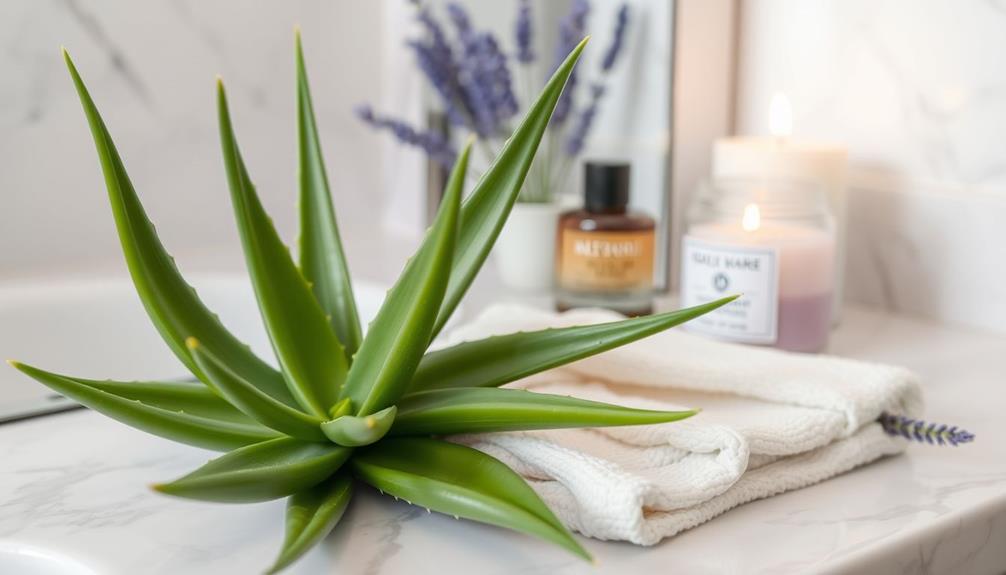
Following a 70% glycolic acid peel, applying a broad-spectrum sunscreen with at least SPF 30 daily is crucial to shield your skin from UV damage and prevent hyperpigmentation. Your aftercare routine plays a significant role in ensuring effective recovery.
Here are some key aftercare tips to follow:
- Hydrate: Use products with ceramides, hyaluronic acid, and peptides to support your skin barrier and minimize irritation.
- Avoid Makeup: Steer clear of makeup for at least 24 hours post-peel to allow your skin to heal properly.
- Gentle Skincare Routine: Cleanse with a mild, non-irritating cleanser and moisturize regularly to promote ideal healing.
Frequency of Treatments

Knowing how to care for your skin after a glycolic acid peel sets the stage for understanding how often you can safely schedule your treatments.
For a 70% glycolic acid peel, it's generally recommended to wait 4 to 6 weeks between sessions. This interval allows your skin sufficient recovery time.
If you're an experienced user, you might consider treatments every 2 to 4 weeks, but this depends on your skin sensitivity and how well your skin responds.
First-time users should avoid jumping straight to a 70% concentration. Instead, start with lower strengths and gradually increase as you monitor your skin's reaction.
Regular treatments can greatly benefit those with advanced signs of aging, but the frequency should align with your individual skin conditions and goals.
Always seek professional guidance when determining the right frequency for your glycolic acid peels, as everyone's skin can react differently.
Your skincare professional can help you assess your skin's tolerance and recommend an appropriate concentration and treatment schedule tailored to your needs.
Frequently Asked Questions
Is 70 Glycolic Acid Too Strong?
Yes, 70% glycolic acid is generally too strong for most people, especially beginners. It can cause irritation and burns if misapplied. Always consult a dermatologist and consider patch testing to guarantee your skin can handle it.
How Long Do You Leave 70% Glycolic Acid On?
Imagine a clock ticking softly; you'll want to let that 70% glycolic acid peel sit for 3-5 minutes initially. Listen to your skin—if it protests, remove it sooner or adjust the time.
What Does a 70 Glycolic Acid Peel Do?
A 70% glycolic acid peel deeply exfoliates your skin, tackling fine lines, wrinkles, and age spots. It boosts cell turnover, increases collagen production, and improves overall texture, leaving you with a brighter, more even complexion.
What Percentage of Glycolic Acid Peel Is Effective?
The effectiveness of a glycolic acid peel largely depends on your skin concerns. For significant issues like deep wrinkles and age spots, higher concentrations (above 30%) are generally more effective, but consult a dermatologist first.
Conclusion
In the world of skincare, a 70% glycolic acid peel is like a magic potion that can transform your skin from drab to fab!
If you're ready to reveal a radiant complexion, this peel could be your ticket to glowing, youthful skin.
Just remember, with great power comes great responsibility—so prep properly, follow aftercare tips, and don't overdo it.
Immerse yourself in this exhilarating journey and let your skin bask in the spotlight it truly deserves!

